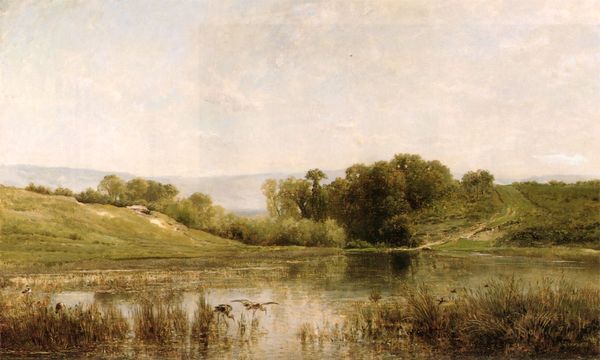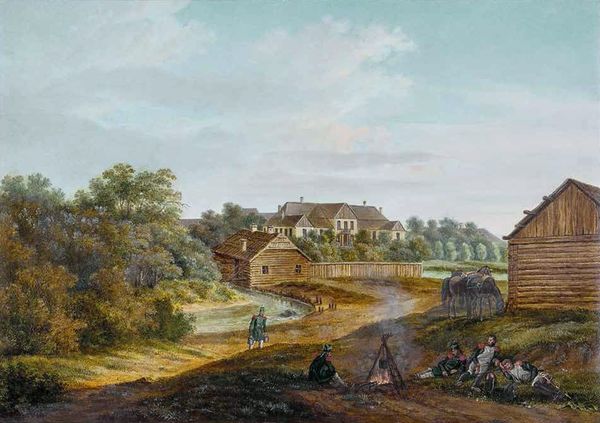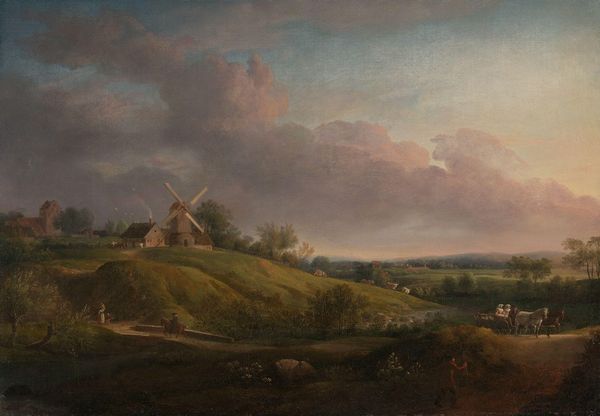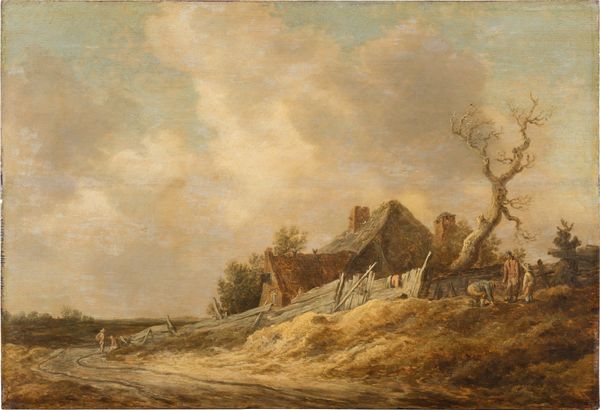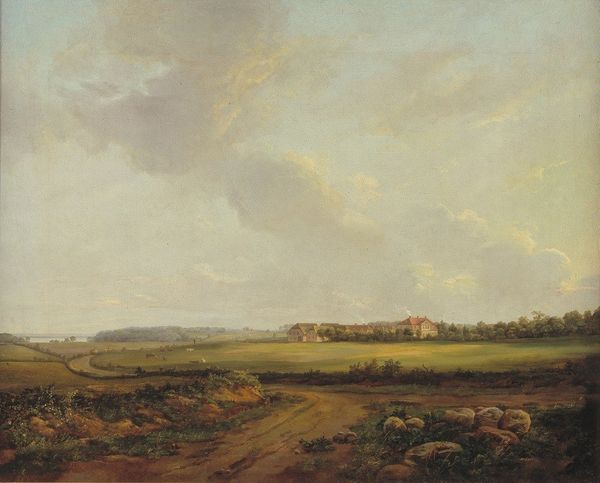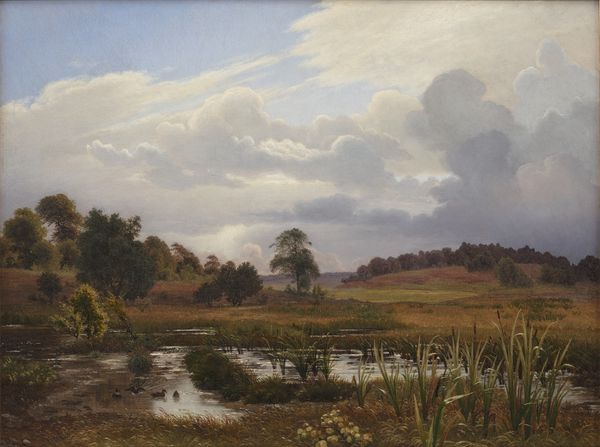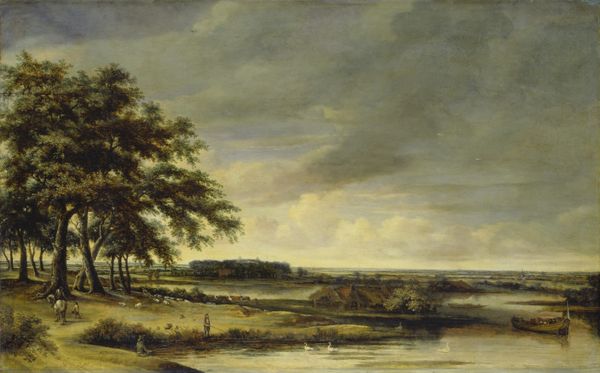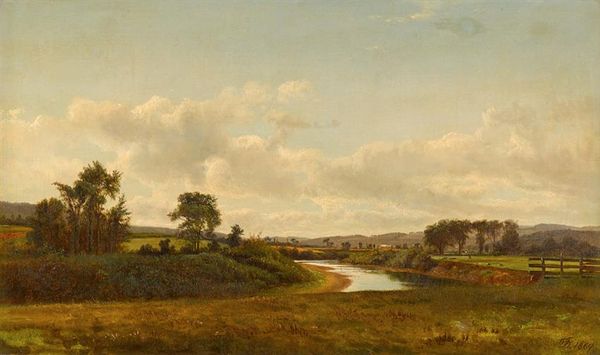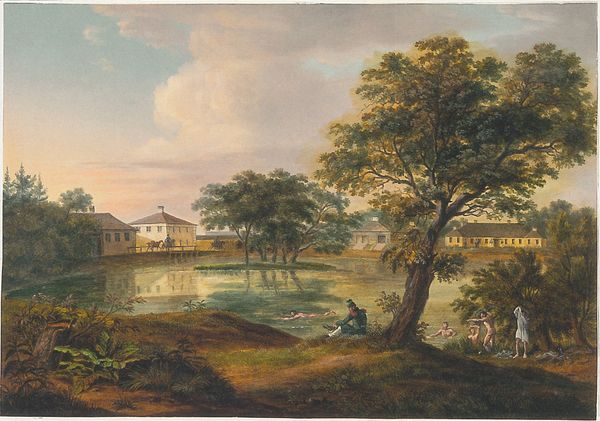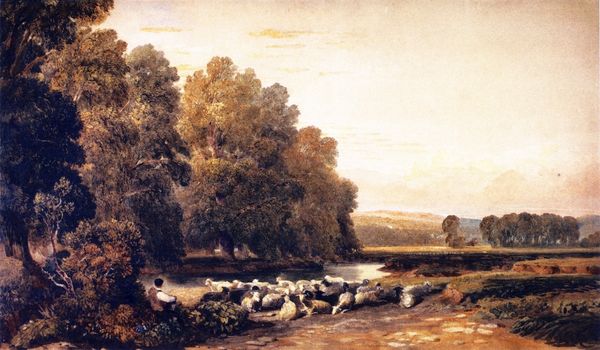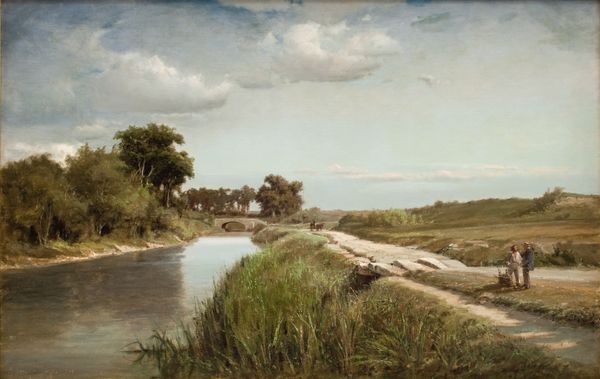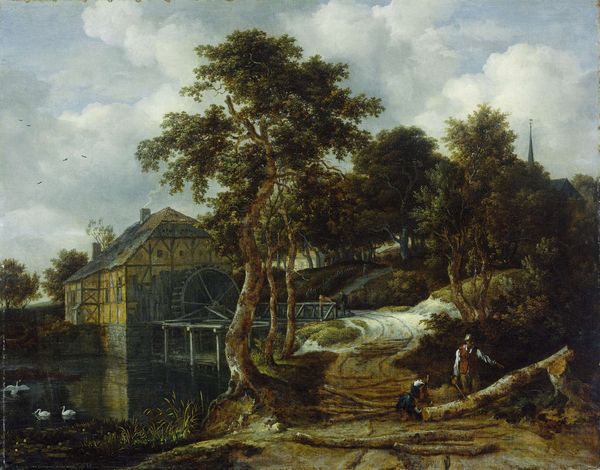
Copyright: Public domain
Editor: So, this is Efim Volkov's "Marsh in Autumn" from 1871. It looks like it's oil and tempera. It has such a muted palette, and I feel a strong sense of melancholy looking at it. How do you interpret this work, especially considering its historical context? Curator: The painting certainly evokes a mood, doesn’t it? But beyond the surface level melancholy, I think it speaks to larger social concerns. The late 19th century in Russia was a time of immense social upheaval, with discussions around serfdom, industrialization and class struggle at the fore. What do you make of the presence of the solitary figure and the surrounding environment? Editor: It feels very lonely. The landscape seems to dwarf them, highlighting maybe, a sense of insignificance or maybe even the harshness of rural life. Curator: Precisely! Consider the debates surrounding land ownership and peasant life at this time. Volkov's choice of this particular scene could serve as a comment on their economic marginalization, connecting with a broader artistic movement called The Wanderers. This painting encourages us to ponder issues of social identity through its representation of labor and landscape. Does the setting feel idealized to you, or something else? Editor: I wouldn’t say idealized exactly, perhaps more realistic. The muted colors and slightly bleak setting point more toward capturing an authentic version of the Russian landscape. I didn’t realize so much social commentary could be drawn from what initially seemed to be just a landscape painting. Curator: Absolutely! Engaging with these social contexts reveals deeper meanings. Looking through a contemporary lens of environmental awareness, how does it reshape your understanding? Editor: Well, it makes me consider human impact on the environment and themes around sustainability in the face of hardship. It highlights the essential connection between people and nature. It shows you how the cultural weight can transform our reading of simple rural scene into the layered complex vision that shows society on canvas. Curator: Precisely. It's through this kind of analysis and continuous discussion that art truly expands our understanding of ourselves and the world we inhabit.
Comments
No comments
Be the first to comment and join the conversation on the ultimate creative platform.
